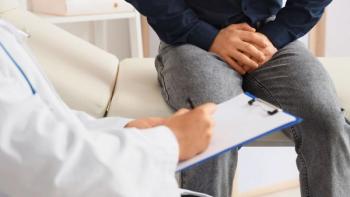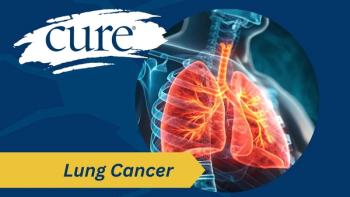
The News About Scans: The Results Edition
After any kind of health trauma, even the good news comes with an air of skepticism, caution and even fear. That said, there's a reason to celebrate any day we get to live and argue in favor of faith and hope, not fear.
I’ve been sitting idle for about a week, hiding the results of a series of scans and medical tests that would determine if I would be “on the road to recovery” or requiring yet another brain surgery. I received my results over text and email and didn’t want to believe it until I sat with the neurosurgeon himself and had the opportunity for his wisdom and insight to guide me forward.
The test was to determine if the tenth brain surgery in a series of craniotomies and cranioplasties to address a brain tumor and subsequent cerebral spinal fluid leak did its job. I still experience all of the symptoms of a spinal fluid leak, so I was reluctant to believe a quick text message from the devoted nurse practitioner that informed me the test found no traces of spinal fluid coming out of my body. You heard me right, after so many attempts, one of the surgeries seemed to have worked. I sat in awe, but got stuck at the next part of the message, “the doctor would still like to chat with you.”
It wasn’t so much an uh-oh moment, as an, “OK, let’s not react at all until we know anything for sure” moment. I tried really hard not to react. Then I called my boyfriend and we both didn’t react together. Then, I took a screenshot of the text message and sent it to a few friends and family to see if they reacted with the same complicated mix of skepticism and thrilled-but-cautious optimism I had. I got mixed reactions. Then I called my parents. We cried together at the thought of the beginning of recovering from a 14-year ordeal of headaches, doctors, neurologists and then surgeries. Then I cried in the joyous assumption that the test was correct, and I let tears of happiness stream down the one side of my face that still makes tears (oh the joy of side effects!). Then I cried so much that I got one of my very common pressure headaches and thought, “Oh no, maybe the test is wrong. I still have headaches, AH!”
Then I went back to not reacting.
I waited patiently for the day of my appointment, and then sat down with the doctor, his most senior resident, and, let’s be honest, about half of my family members. With a large audience in the room, I studied the doctor’s face, trying to detect any possible sense of triumph that he had fixed “the worst spinal fluid leak he’d seen in 35 years of practice.” His face was kind, patient, caring — all things I’d want in a great doctor — but it wasn’t triumphant.
“You fixed it?!” I declared with a rather awkward tinge of doubt.
He told me that in any other patient, he would take this test as an absolute confirmation that the surgeries had done their job and that I didn’t have a cerebral spinal fluid leak, but because my case was so complicated and so challenging, he couldn’t make that promise. Then his face showed an air of growing concern as he asked me to list my symptoms and tell him how I was feeling.
“I feel better, but I don’t feel good. The pain is chronic, the fatigue is too, and the fluctuations in vision are just plain annoying. My ears ring, my muscles spasm and my balance is wonky at best.”
He told me he was 98 percent sure he fixed the leak. My arms shot up in the air with a sense of celebration I hadn’t felt in some time. His response was measured, careful, thoughtful. He told me he still wants me to feel better. He told me his job is not done until I feel active and have a semblance of the things I love back. I so appreciated his devotion, as a physician and a friend, to my well-being. He told me it might take a year, maybe more.
I told him that 98 percent was my new favorite percentage, I told him that if I wasn’t going to die, if I didn’t have to put my life on the operating table, we had succeeded. I told him a year was fine.
So we set up a plan that is frankly much more time consuming than sitting at home, biting your nails and waiting to hear if you need more surgery. It is a plan that involves actively working on recovery in order to see if my body can improve. It’s a plan that is holistic and includes headache specialists, trauma therapists, physical therapists, new medications and daily healthy habits. It is a plan the doctor was careful to be modest in beginning, as he acknowledged he doesn’t want me to spend my whole life at various doctor’s appointments. It is a plan I feel comfortable with and it is, for the first time in a long time, a plan for recovery. It is a gift. If I start to feel better then we know, that the test wasn’t just 98 percent right, it was 100 percent right. If I don’t feel better, we do the test again.
It seems like a good plan.
I’m still a brain tumor patient, I’m still a cerebral spinal fluid patient and I still have to get regular MRIs and follow up care. I’m also still me, I always have been, and I get to let my focus on the tumor and the leak fade into the background in favor of myself. I get to live my life in pursuit of recovery, in pursuit of health, in pursuit of joy and love and hope, and I get to live in honor of those I’ve loved and lost to this battle against brain tumors, who didn’t get the chance I have in front of me.
I don’t know what the future will hold, but for the time being, I can confidently say that the tenth time was the charm and now I get to try. So, here’s to believing in all that can be possible and here’s to hope, health and the pursuit of recovery.




